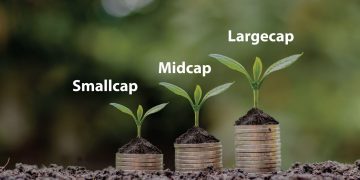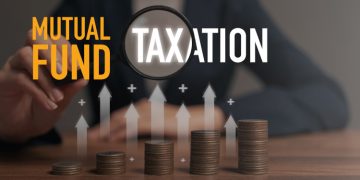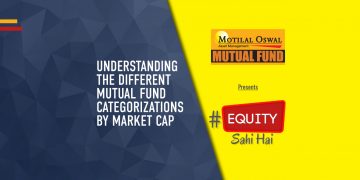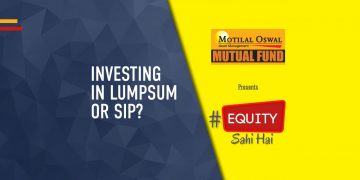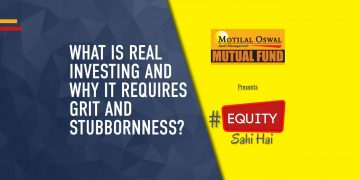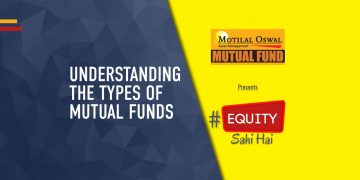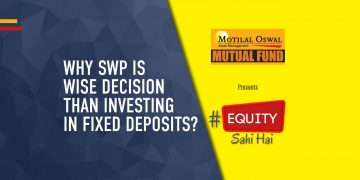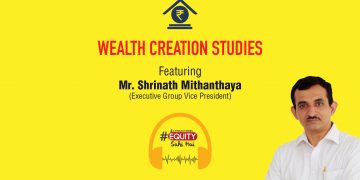Mutual funds are a popular investment option for people looking to save for the future and earn decent returns on their investments. They offer a convenient and efficient way to invest in a diversified portfolio of stocks, bonds, and other securities, reducing the risk associated with investing in individual stocks or bonds. Mutual funds are managed by professional fund managers who make investment decisions and manage the fund’s portfolio on behalf of its investors.
One of the most significant benefits of investing in mutual funds is the ability to save on taxes. By investing in mutual funds, you can take advantage of the tax benefits that come with investing in different types of funds, such as equity mutual funds, debt mutual funds, and hybrid mutual funds. In this article, we’ll explore the different tax benefits associated with investing in mutual funds and how you can save your tax by investing in mutual funds.
What are tax-saving mutual funds?
Tax-saving mutual funds, also known as Equity-Linked Savings Schemes (ELSS), offer tax benefits to investors under Section 80C of the Income Tax Act. Funds under ELSS invest a major portion of their corpus in equity and equity-related securities, making them suitable for long-term investment.
ELSS is a variant of equity-oriented mutual fund that invests primarily in domestic company shares and provides the opportunity for capital appreciation for investors. ELSS mutual fund returns are qualified for tax deductions under the Income Tax Act, 1961. The returns generated by these funds are linked to the performance of the stock market. To benefit from the tax deductions, investors must hold their investments for a minimum of three years. ELSS funds can be either growth or dividend options, both of which have their own benefits.
How to invest in Equity-Linked Savings Schemes (ELSS)?
When investing in ELSS, up to ₹1,50,000 per annum can be claimed as tax deductions under Section 80C of the Income Tax Act. However, returns (from equity-oriented mutual funds and equity shares) over ₹1,00,000 will be subject to a 10% long-term capital gains tax.
To invest in ELSS, you can choose either a lump sum investment or a Systematic Investment Plan (SIP). The minimum lump sum investment amount is usually ₹500. You can invest in ELSS through a mutual fund distributor or online. When choosing an ELSS fund, it is important to evaluate the scheme’s historical performance, consistency of returns, fund size, and age. However, the most important factor is aligning the fund with your financial objectives.
What are the tax benefits of investing in mutual funds?
Investing in mutual funds offers several tax benefits, which can help you save money on your taxes and increase your returns from your investment.
Here are three significant tax benefits associated with investing in mutual funds:
● Dividend Distribution Tax
Dividend Distribution Tax (DDT) is a tax imposed on the dividends paid to investors by mutual funds. DDT is payable by the mutual fund and not by the investor. The tax is calculated based on the amount of dividend declared by the mutual fund and is levied at a rate specified by the government from time to time.
In India, DDT is levied at a rate of 10% for resident investors and 20% for non-resident investors, plus applicable surcharge and cess. The mutual fund deducts the DDT before paying the dividend to the investors and is responsible for depositing the tax with the government.
DDT has an impact on the overall returns of the mutual fund as the tax reduces the amount of dividend paid to the investors. Investors must consider the impact of DDT while choosing a mutual fund. In case of debt mutual funds, the dividend income is taxed at the investor’s slab rate, which may be higher than the DDT rate. In such cases, debt funds may be a more tax-efficient investment option.
Investors should also be aware of the tax implications of reinvesting dividends. If the reinvested dividends are taxed at the DDT rate, it may reduce the overall returns of the investment. Investors may consider investing in growth funds instead of dividend funds to avoid the impact of DDT.
In conclusion, DDT is a tax imposed on the dividends paid by mutual funds and is payable by the mutual fund. Investors should be aware of the DDT rate and its impact on their returns before investing in a mutual fund. The choice between growth funds and dividend funds should be based on investment goals, risk tolerance, and tax implications.
● Long-Term Capital Gains Tax
Long-term Capital Gains (LTCG) Tax is a tax levied on the profit earned from the sale of long-term investments in mutual funds, stocks, and other securities. In India, long-term investments are defined as investments held for a period of more than one year. For mutual funds, if you sell units held for more than one year, the profit earned from the sale is subject to LTCG tax.
As per the current tax laws, LTCG on equity-oriented mutual funds is taxed at a flat rate of 10% if the gains are more than ₹1,00,000 in a financial year. This means that if you have earned a profit of ₹2,00,000 from the sale of equity mutual fund units held for more than a year, you will have to pay a tax of 10% on ₹1,00,000, which is the amount earned over the ₹1,00,000 threshold.
It’s important to note that LTCG on mutual funds is taxed only if you sell the units. If you continue to hold the units, there is no tax liability. Additionally, if you sell the units within one year of purchase, the gains are considered short-term capital gains and taxed at your applicable income tax rate.
Investors can opt for the dividend reinvestment option in mutual funds to defer paying LTCG tax. In this option, instead of receiving dividends in cash, the dividends are automatically reinvested to purchase additional units. This increases the cost of acquisition and reduces the capital gains when you eventually sell the units.
In conclusion, LTCG tax is a tax on the profit earned from the sale of long-term investments in mutual funds, stocks, and other securities. It’s essential to understand the tax implications of your investments and plan accordingly.
● Short-Term Capital Gains Tax
Short-Term Capital Gains (STCG) Tax on mutual funds is a tax levied on the profits earned by selling mutual fund units that have been held for less than one year. When mutual fund units are sold within a year of the purchase, the profits are taxed as short-term capital gains. The STCG is taxed as per the investor’s marginal tax rate, which varies depending on the total taxable income.
STCG from equity mutual funds is taxed at a rate of 15%, while non-equity funds are taxed at the rate of the investor’s marginal tax rate. In addition to this, there is also a securities transaction tax (STT) of 0.1% on the sale of equity mutual funds and 0.25% on the sale of non-equity funds.
It’s important to note that short-term capital gains tax on mutual funds is different from long-term capital gains tax, which applies to mutual fund units held for more than one year. While long-term capital gains tax on equity mutual funds is taxed at 10% without indexation, STCG from mutual funds is taxed at a higher rate.
Investors should carefully consider the time horizon for their mutual fund investments and take into account the tax implications before investing. If you’re looking for short-term gains, it’s advisable to consider alternative investments with lower tax implications, such as bonds or fixed deposits. However, if you are looking to invest for the long term, equity mutual funds can offer better returns and lower taxes compared to other investment options.
What are the advantages of tax-saving mutual funds?
Tax benefits: ELSS funds offer tax savings of up to ₹1, 50,000 under Section 80C of the Income Tax Act.
Diversification: ELSS funds invest in a basket of equities and equity-related securities, reducing the risk of investment compared to investing in individual stocks.
Potential for higher returns: Historically, ELSS funds have generated higher returns compared to traditional fixed-income investments like fixed deposits, providing a better inflation-adjusted return over the long term.
Flexibility: ELSS funds offer the option of lump-sum investment or SIP, making it accessible to investors with different investment horizons and risk appetites.
Liquidity: ELSS funds are highly liquid and can be redeemed at any time, subject to exit load, if any.
What are the risks associated with tax-saving mutual funds?
Market risk: As ELSS funds invest primarily in equities, they are subject to market fluctuations, which can result in short-term losses.
Selection risk: The fund manager’s skill and experience play a crucial role in determining the performance of ELSS funds. A poorly managed fund can result in sub-par returns.
Concentration risk: ELSS funds may invest a large portion of their corpus in a few companies, increasing the concentration risk.
What are the factors to consider while choosing a tax-saving mutual fund?
As with any investment, it is important to consider various factors before investing in ELSS. Here are a few things to keep in mind:
Goals: Before investing in ELSS, it is crucial to outline your reasons for doing so. In addition to saving on taxes, ELSS can also help you meet other financial goals, such as going on a vacation or purchasing a vehicle.
Risk: ELSS funds invest mostly in equities, meaning they are considered riskier than other types of investments. Returns are not guaranteed and can fluctuate based on market conditions. Before investing in ELSS, you should consider your risk tolerance and ensure that you are comfortable with the level of risk involved.
Tax exemption: Up to ₹1, 50,000 per annum can be claimed as tax deductions under Section 80C of the Income Tax Act. However, it is important to keep in mind that this section also includes other options like Provident Fund and life insurance policies. If you have other claims, the entire ELSS amount may not be eligible for deductions.
Time horizon: Three years is the minimum lock-in period of ELSS funds, which means you cannot redeem your investment for at least three years. It’s important to ensure that you won’t need the funds during this period.
Fund performance: Before investing in ELSS, you should evaluate different schemes based on their historical performance, consistency of returns, age, and fund size. A larger fund with a long history of performance can indicate higher trust among investors. However, it is important to pick a fund most aligned with your financial objectives and risk tolerance rather than going with market trends.
Diversification: As with any investment, it’s important to diversify your portfolio. Consider investing in a combination of different types of mutual funds and assets to spread out risk and maximise returns.
Portfolio: The portfolio of the fund should be diversified, with a mix of growth and value stocks.
Expense ratio: The fund’s expense ratio should be reasonable, as it affects the fund’s overall returns.
Exit load: The exit load, if any, should be reasonable, and should not be a deterrent to redeeming the units in case of an emergency.
Fund manager: The experience and track record of the fund manager should be evaluated to determine their ability to generate consistent returns.
Bottom Line
ELSS funds offer a good combination of tax savings and the potential for higher returns over the long term. However, like any investment, ELSS funds also come with risks, and it is crucial to consider all the relevant factors before investing. As with all investments, it is crucial to consult a financial advisor before investing in ELSS funds.
Disclaimer: This blog has been issued on the basis of internal data, publicly available information and other sources believed to be reliable. The information contained in this document is for general purposes only and not a complete disclosure of every material fact. The information/data herein alone is not sufficient and shouldn’t be used for the development or implementation of an investment strategy. It should not be construed as investment advice to any party. All opinions, figures, estimates and data included in this blog are as on date. The blog does not warrant the completeness or accuracy of the information and disclaims all liabilities, losses and damages arising out of the use of this information. The statements contained herein may include statements of future expectations and other forward-looking statements that are based on our current views and assumptions and involve known and unknown risks and uncertainties that could cause actual results, performance or events to differ materially from those expressed or implied in such statements. Readers shall be fully responsible/liable for any decision taken on the basis of this article.
Mutual Fund investments are subject to market risks, read all scheme related documents carefully.





